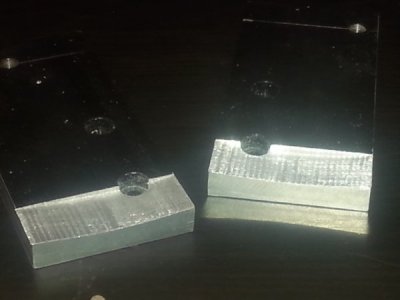- Joined
- Jul 4, 2014
- Messages
- 156
Guys
I need advice. I want to cut 14 inch diameter curvature on 2 inch wide aluminum pieces as below. I made a sketch as attached below.

My Grizzly G4000 lathe is a 9x19 and can not be used to turn 14 inch diameter. That leaves me only my mini-mill to do this machining. It is not a CNC and I calculated the x-y movements for the cutter in small steps. The process is moving the milling cutter manually in X-Y steps as if it is a CNC process. Steps are roughly 0.0315" in X axis. On Y axis the cutter is moved in much smaller steps to follow the radius desired. I tried milling it using a 3/4 inch end mill. The result is as attached below.

The above image is what I made. You may notice curved surface has small steps but that is OK. It is the process involved that makes it tedious. I wish there is an easier way. I do not own a rotary stage and do not plan on buying one either.
Any ideas?
Thanks
Prasad
Eastern PA
I need advice. I want to cut 14 inch diameter curvature on 2 inch wide aluminum pieces as below. I made a sketch as attached below.

My Grizzly G4000 lathe is a 9x19 and can not be used to turn 14 inch diameter. That leaves me only my mini-mill to do this machining. It is not a CNC and I calculated the x-y movements for the cutter in small steps. The process is moving the milling cutter manually in X-Y steps as if it is a CNC process. Steps are roughly 0.0315" in X axis. On Y axis the cutter is moved in much smaller steps to follow the radius desired. I tried milling it using a 3/4 inch end mill. The result is as attached below.

The above image is what I made. You may notice curved surface has small steps but that is OK. It is the process involved that makes it tedious. I wish there is an easier way. I do not own a rotary stage and do not plan on buying one either.
Any ideas?
Thanks
Prasad
Eastern PA
Last edited:

 That is not easy to do by hand.
That is not easy to do by hand.